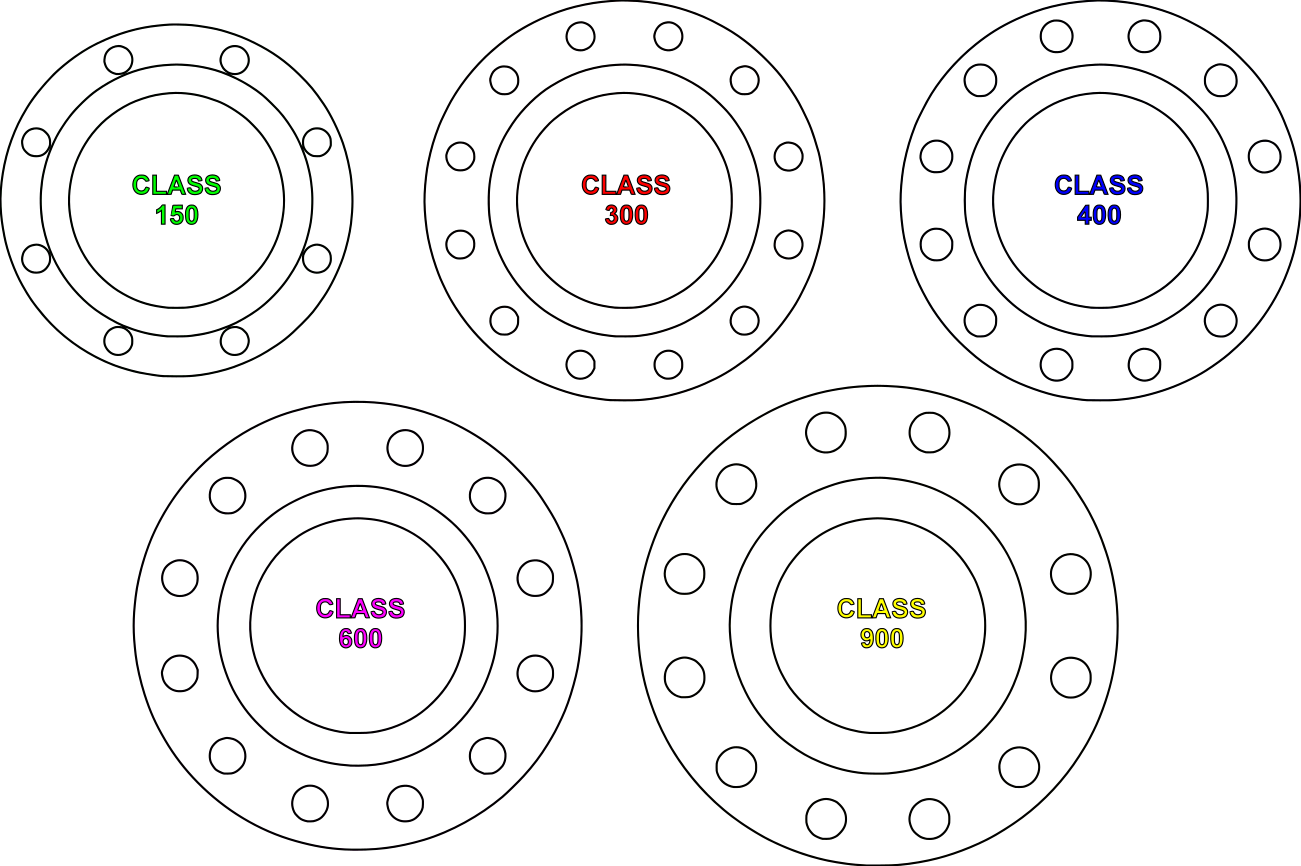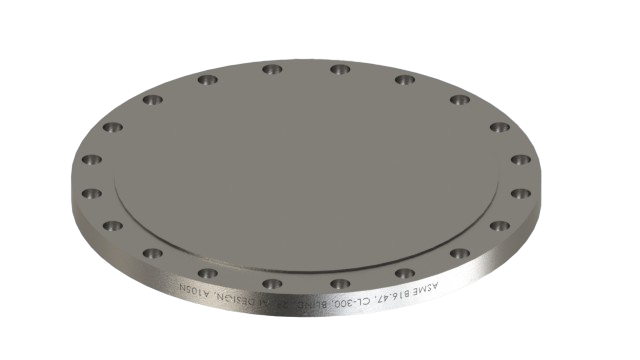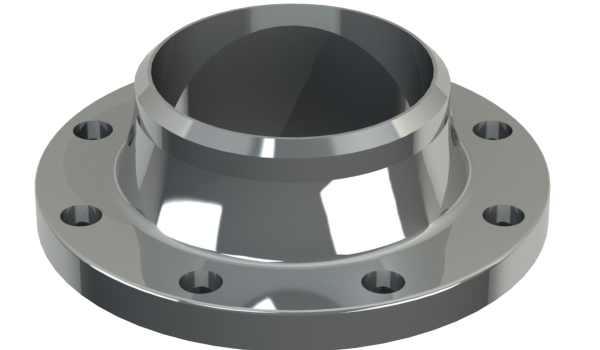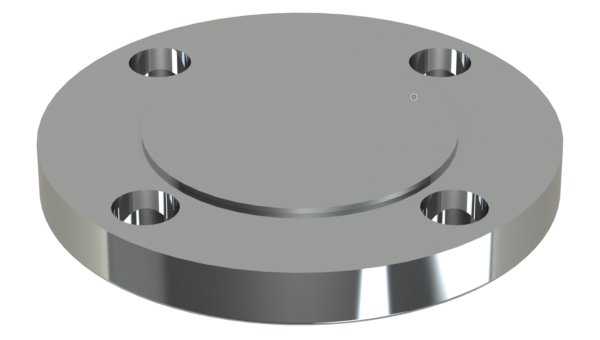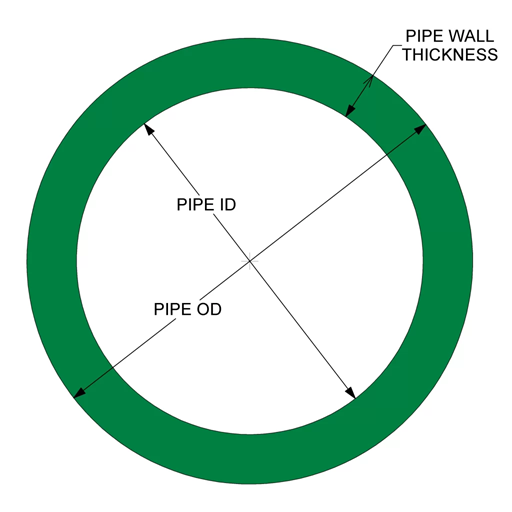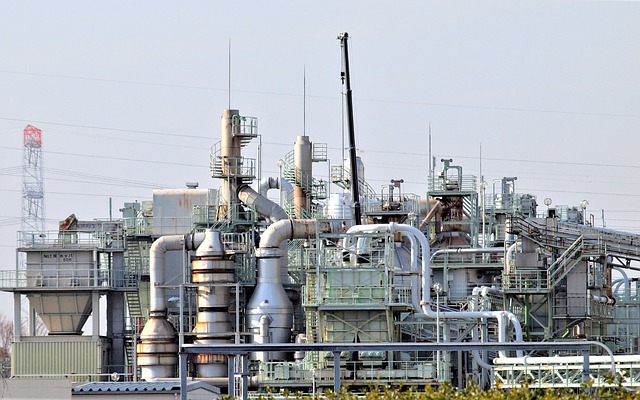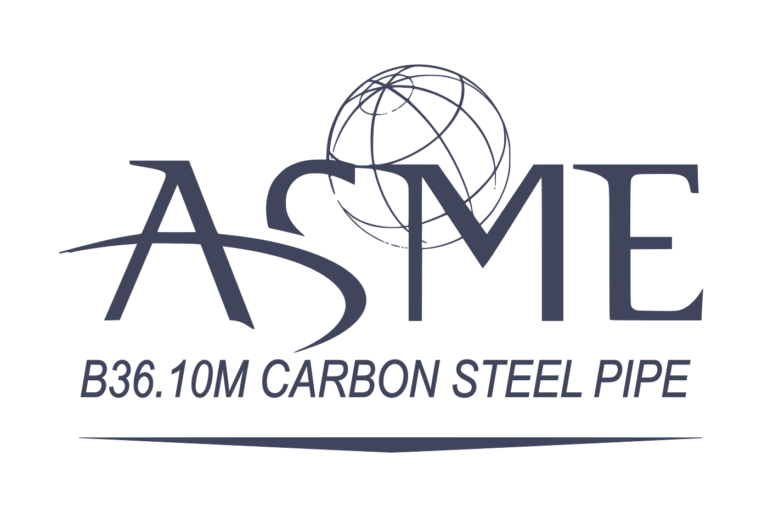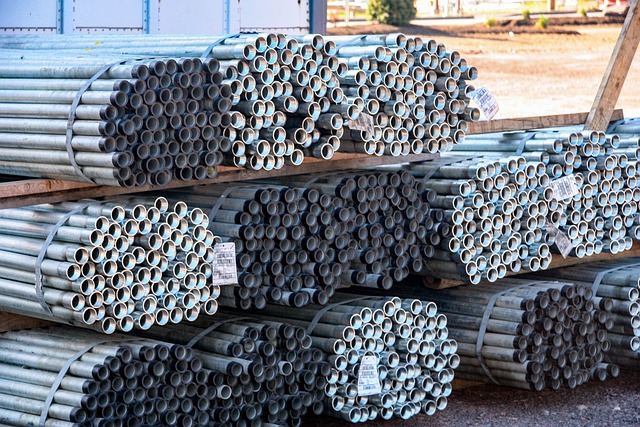In Process Piping, one important area that engineers and piping designers must understand the concept of “flange classes.” These classes help engineers to choose the right flange without going through calculations based on the design pressure and temperatures. ASME and ASTM specify all the Selection guidelines. In this post, I will try to explain the significance of ASME classes.
Classes are not only designed to select the right flange but also help plant operators and fitters to select the right replacement spool with flange. As an example, If the plant has an ASME-built tank with pre-built CL150 flanges as the nozzle on multiple locations, the Welder and fitter can use the same class Weld-Neck, Slip on, or other based on the situation. Note: all CL150 flange for same NPS have Samilat bolt hole pattern and Hole diameter.
Flange Class Fundamental Parameters
1. Pressure Rating (Class):
The pressure rating or class of a flange means how much maximum pressure it can withstand in PSI per Square inch. As an example, the Class 150 flange can withstand 150 psi pressure per square inch. It doesn’t mean that the whole flange is designed for a total of 150 psi. The actual Maximum allowable working pressure directly depends on the temperature of the fluid and material of a flange. See table below. Most Common pressure classes are 150, 300, 600, 900, 1500, and 2500. To understand the pressure class.
Note: CL300 flange doesn’t mean it is rated for 300psi. Please see the temperature & pressure rating based on flange materials at the end of the table.
2. Temperature Rating:
Flanges are also designed by ASME to operate within specific temperature ranges. Flanges are made with different materials and manufacturing methods like forging, casting or cutting from a plate. Both material and construction methods directly impact the MAWP of a particular flange. ASME and ASTM have set out rules for flange manufacturers to follow. ASME also defines the relation between pressure-temperature rating and construction material for each flange to help engineers and designers choose the right flange. I hope it makes sense.
The temperature rating is expressed in degrees Fahrenheit. Different materials and construction methods may have varying temperature limits. Careful consideration of the operating temperatures is vital to ensure the flange can withstand the conditions to which it will be exposed.
How to Apply it For Process Piping:
To put this into real example, A Class 150 flange may be suitable for lower-pressure sections of the system, while a Class 600 flange would be deployed in areas where higher pressures are anticipated. Matching the flange class with the corresponding pressure and temperature requirements is a fundamental step in designing and constructing a reliable piping network. Flange NPS size, Design Pressure, and temperature are 3 fundamental factors in choosing the right flange.
When it comes to designing or selecting flanges for a piping system, engineers must carefully assess the operating conditions.
Materials Used for ASME B16.5 Flange (Partial Listing)
| Material Group | Nominal Designation | ASTM Spec. Forgings | ASTM Spec. Castings | ASTM Spec. Plates |
| 1.1 |
C-Si |
A 105 |
A 216 Gr. WCB |
A 515 Gr. 70 |
| 2.1 |
18Cr-8Ni |
A182 Gr. F304 |
A 351 Gr. CF3 |
A 240 Gr. 304 |
| 2.2 |
16Cr-12Ni-2Mo |
A 182 Gr. F316 |
A 351 Gr. CF3M |
A 240 Gr. 316 |
Working Pressure Temperature Ratings for ASME B16.5 - Material Group 1.1
| wdt_ID | Design Temp. ºF | 150# (psig) | 300# (psig) | 400# (psig) | 600# (psig) | 900# (psig) | 1500# (psig) | 2500# (psig) |
|---|---|---|---|---|---|---|---|---|
| 1 | -20 to 100 | 285 | 740 | 990 | 1,480 | 2,220 | 3,705 | 6,170 |
| 2 | 200 | 260 | 675 | 900 | 1,350 | 2,025 | 3,375 | 5,625 |
| 3 | 300 | 230 | 655 | 875 | 1,315 | 1,970 | 3,280 | 5,470 |
| 4 | 400 | 200 | 635 | 845 | 1,270 | 1,900 | 3,170 | 5,280 |
| 5 | 500 | 170 | 600 | 800 | 1,200 | 1,795 | 2,995 | 4,990 |
| 6 | 600 | 140 | 550 | 730 | 1,095 | 1,640 | 2,735 | 4,560 |
| 7 | 650 | 125 | 535 | 715 | 1,075 | 1,610 | 2,685 | 4,475 |
| 8 | 700 | 110 | 535 | 710 | 1,065 | 1,600 | 2,665 | 4,440 |
| 9 | 750 | 95 | 505 | 670 | 1,010 | 1,510 | 2,520 | 4,200 |
| 10 | 800 | 80 | 410 | 550 | 825 | 1,235 | 2,060 | 3,430 |
| 11 | 850 | 65 | 270 | 355 | 535 | 805 | 1,340 | 2,230 |
| 12 | 900 | 50 | 170 | 230 | 345 | 515 | 860 | 1,430 |
| 13 | 950 | 35 | 105 | 140 | 205 | 310 | 515 | 860 |
| 14 | 1000 | 20 | 50 | 70 | 105 | 155 | 260 | 430 |
Working Pressure Temperature Ratings for ASME B16.5 - Material Group 2.1
| wdt_ID | Design Temp. ºF | 150# (psig) | 300# (psig) | 400# (psig) | 600# (psig) | 900# (psig) | 1500# (psig) | 2500# (psig) |
|---|---|---|---|---|---|---|---|---|
| 1 | -20 to 100 | 275 | 720 | 960 | 1,440 | 2,160 | 3,600 | 6,000 |
| 2 | 200 | 235 | 600 | 800 | 1,200 | 1,800 | 3,000 | 5,000 |
| 3 | 300 | 205 | 530 | 705 | 1,055 | 1,585 | 2,640 | 4,400 |
| 4 | 400 | 180 | 470 | 630 | 940 | 1,410 | 2,350 | 3,920 |
| 5 | 500 | 170 | 435 | 585 | 875 | 1,310 | 2,185 | 3,640 |
| 6 | 600 | 140 | 415 | 555 | 830 | 1,245 | 2,075 | 3,460 |
| 7 | 650 | 125 | 410 | 545 | 815 | 1,225 | 2,040 | 3,400 |
| 8 | 700 | 110 | 405 | 540 | 805 | 1,210 | 2,015 | 3,360 |
| 9 | 750 | 95 | 400 | 530 | 795 | 1,195 | 1,990 | 3,320 |
| 10 | 800 | 80 | 395 | 525 | 790 | 1,180 | 1,970 | 3,280 |
| 11 | 850 | 65 | 390 | 520 | 780 | 1,165 | 1,945 | 3,240 |
| 12 | 900 | 50 | 385 | 510 | 770 | 1,150 | 1,920 | 3,200 |
| 13 | 950 | 35 | 375 | 500 | 750 | 1,125 | 1,870 | 3,120 |
| 14 | 1000 | 20 | 325 | 430 | 645 | 965 | 1,610 | 2,685 |
Working Pressure Temperature Ratings for ASME B16.5 - Material Group 2.2
| wdt_ID | Design Temp. ºF | 150# (psig) | 300# (psig) | 400# (psig) | 600# (psig) | 900# (psig) | 1500# (psig) | 2500# (psig) |
|---|---|---|---|---|---|---|---|---|
| 1 | -20 to 100 | 275 | 720 | 960 | 1,440 | 2,160 | 3,600 | 6,000 |
| 2 | 200 | 240 | 620 | 825 | 1,240 | 1,860 | 3,095 | 5,160 |
| 3 | 300 | 215 | 560 | 745 | 1,120 | 1,680 | 2,795 | 4,660 |
| 4 | 400 | 195 | 515 | 685 | 1,030 | 1,540 | 2,570 | 4,280 |
| 5 | 500 | 170 | 480 | 635 | 955 | 1,435 | 2,390 | 3,980 |
| 6 | 600 | 140 | 450 | 600 | 905 | 1,355 | 2,255 | 3,760 |
| 7 | 650 | 125 | 445 | 590 | 890 | 1,330 | 2,220 | 3,700 |
| 8 | 700 | 110 | 430 | 575 | 865 | 1,295 | 2,160 | 3,600 |
| 9 | 750 | 95 | 425 | 565 | 845 | 1,270 | 2,110 | 3,520 |
| 10 | 800 | 80 | 415 | 555 | 830 | 1,245 | 2,075 | 3,460 |
| 11 | 850 | 65 | 405 | 540 | 810 | 1,215 | 2,030 | 3,380 |
| 12 | 900 | 50 | 395 | 525 | 790 | 1,180 | 1,970 | 3,280 |
| 13 | 950 | 35 | 385 | 515 | 775 | 1,160 | 1,930 | 3,220 |
| 14 | 1000 | 20 | 365 | 485 | 725 | 1,090 | 1,820 | 3,030 |

